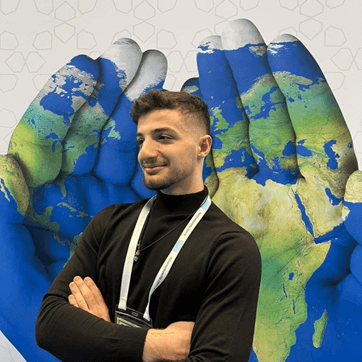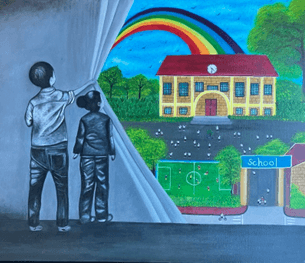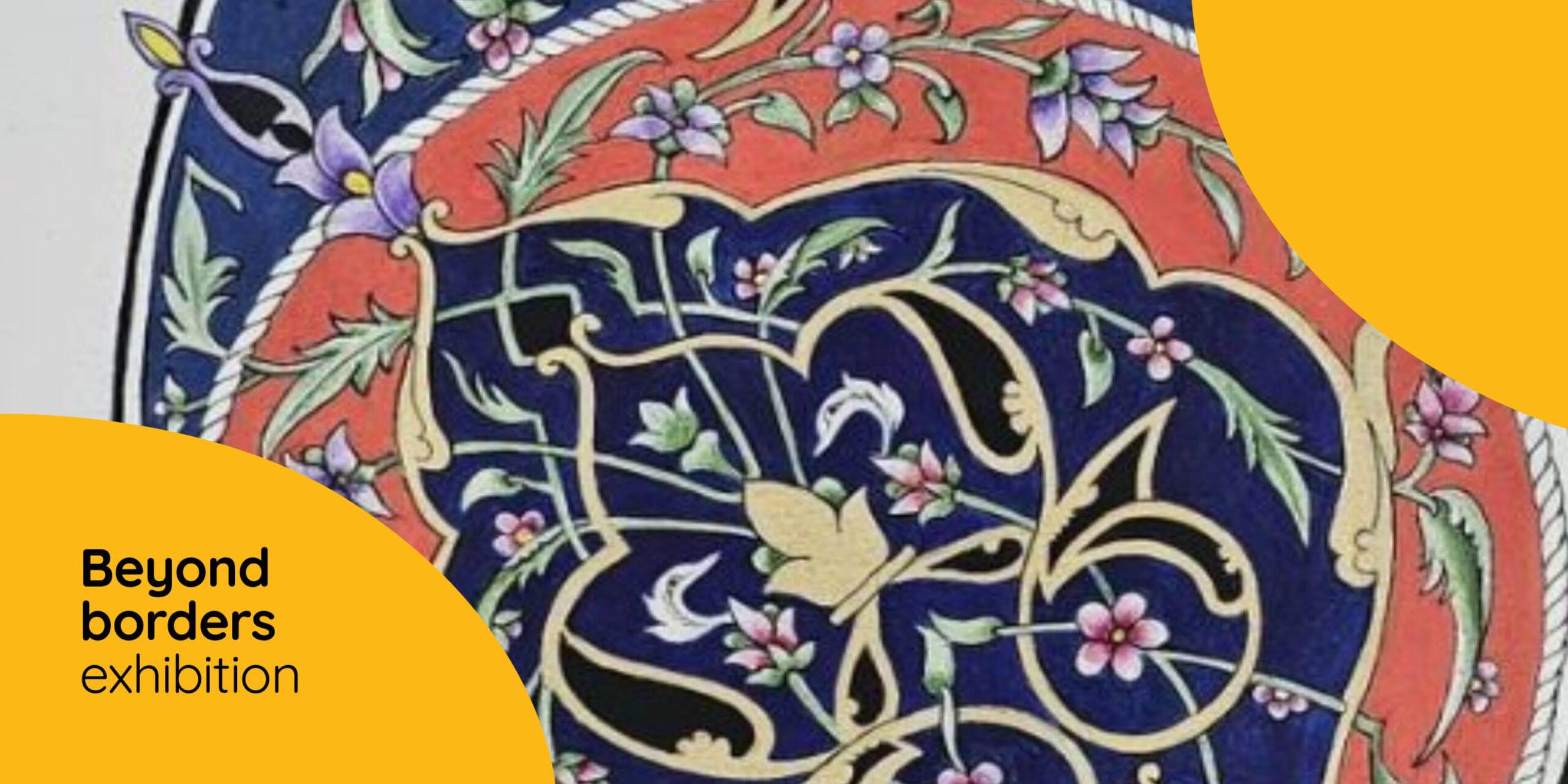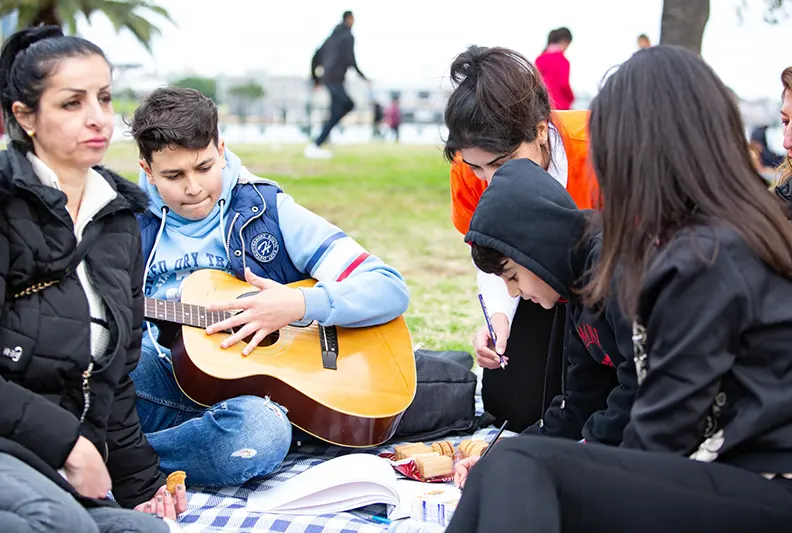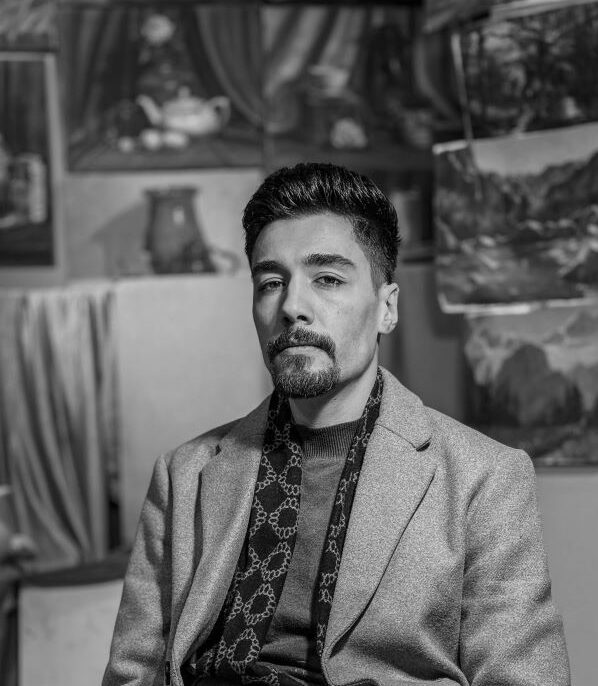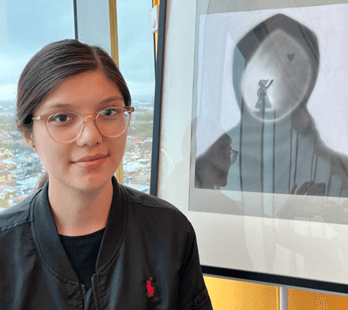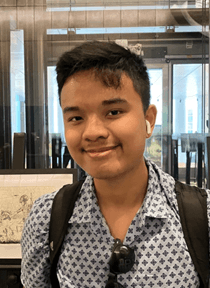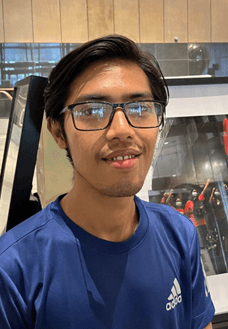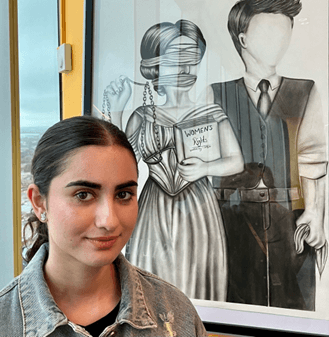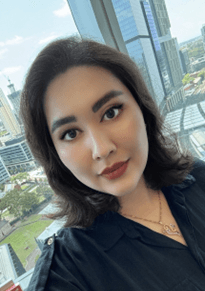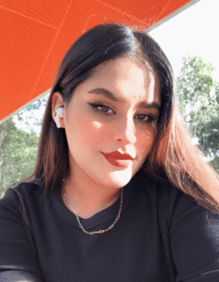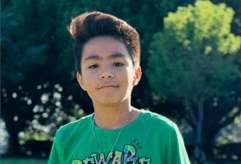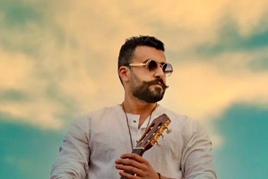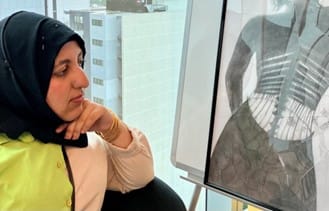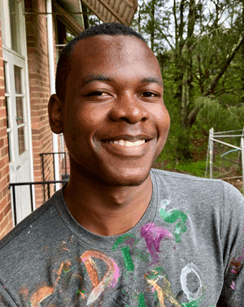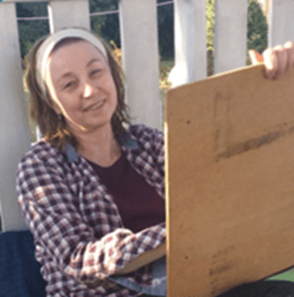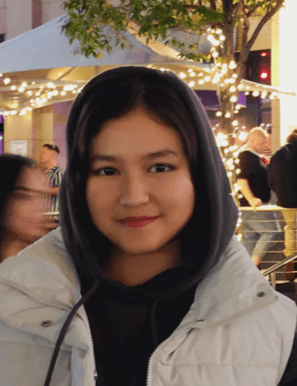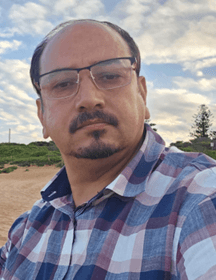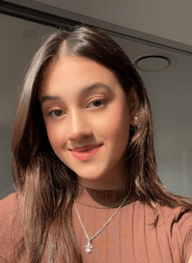For refugee artists, creative practice is more than a profession—it’s a lifeline that bridges past experiences with new possibilities.
The artists featured in this exhibition are part of our Creative Compass program, a unique initiative that helps newly arrived refugee artists to develop their careers and build connections here.
Having been in Australia for only a few months, they come from diverse backgrounds including Afghanistan, Syria, Ukraine, Congo, Burma, and Iraq, and their work is pathway to healing, integration, and self-expression.
Exhibition catalogue
Silent Scream, Yousif Bashar, Charcoal on Paper, 50 x 35 CM, $700.
Sanctuary of Peace, Mahnaz Zawarzada, Oil painting, 90 x 60 CM, $1,500.
Last Day of Paradise, Maryam Hosseini, Acrylic on Canvas, 92 x 92 CM, $1,500.
From Tur to Steel (dogs), Setara Shafaie, Graphic pencil on paper, 30 x 42 CM, $850.
Tearless, Ahmed Abunada, Charcoal and graphic pencil on paper, 60 x 50 CM, $5,000.
Storm, Fatima Farhad, Watercolor on paper, 35 CM diameter, $750.
Bald Eagle, Muhammad Akbar Farhad, Wood Burning on Plywood, 41 x 39 CM, $700
The Unlocker, Ali Sayouh, Acrylic on Canvas, 90 x 90 CM, $2,700.
Blooming Thoughts, Ali Sayouh, Acrylic on Canvas, 70 x 70 CM, $1,900.
From Fire to Peace, Yousif Bashar, Charcoal and Pencil Colours on Paper, 29 x 42 CM, $500.
Enquire about buying a piece
Get in touch
Email us: creativecompass@ssi.org.au
About Ahmed
Ahmed Abunada was born in the Gaza Strip (Palestine) in 1996. His artistic style is characterised by realism and impressionism. Abunada expresses his ideas through drawing, classic oil paintings, charcoal paintings, comics drawings, and digital arts.
He is a member of the Hawaf art group.
Ahmed has shown his work in various art exhibitions across Palestine, Italy, France and Egypt.
In 2023, before the start of the genocide, Abunada’s work Toxic was in the French Institute’s “Art of Gaza” exhibition. The painting was destroyed during the bombing of his home.
In Egypt, Abunada exhibited his oil painting Warrior Journalist, and his charcoal and pencil works The Nakba and Tearless in the 2024 exhibition, “I wish I were a candle”.
Ahmed was forced to flee several times during the genocide in his homeland, then he fled to Egypt. He now lives and works in Sydney, Australia.
About Soda
Soda Bahar, born in Kabul, Afghanistan, in 2005, is an artist educated in both Afghanistan and Pakistan through various art courses. In 2023, she received a Certificate of Appreciation from a government institution in Pakistan, recognising her contributions to the arts.
Her work delves deeply into women’s rights and the struggles they face, particularly highlighting themes of suffering and resilience. Using mediums such as acrylics, pencils, and charcoal, Soda creates evocative pieces that address issues like violence against women and advocate for women’s rights.
Soda has participated in exhibitions organised by the government of Pakistan, showcasing her commitment to social issues through her art. Currently residing in Sydney, Australia, she is painting new work in preparation for the upcoming Sydney City Fair.
Soda’s artist statement
As an artist, I strive to defend women’s rights in society and raise awareness among women about their rights through my paintings. I primarily work with charcoal, though I am also eager to work with colour. I am drawn to realism, as anything that evokes a sense of reality in me brings a sense of fulfillment, and I want others to experience this feeling as well. My main goal in art is to support women’s rights because I feel their pain as my own. Women are creators of the most beautiful things, and I want their voices to be heard through my work.
About Thura
Thura Zaw (b.2006) is a self-taught artist who often experiments with manga (Japanese origin comic art style) and line art illustrations using a blank book and a ballpoint pen. He is now starting to learn watercolor. His work is stylistic rather than realistic although not less detailed.
Thura came from a war-torn country called Myanmar and the effects of those atrocities include carpet air raids, village inferno massacres and the grotesquely dismembered bodies of men and children alike are eternally etched in his heart. His art expresses the pain of other people who lost their voice, and those who never had a chance.
Being a self-taught artist, Thura started his journey with many difficulties but despite constant discouragement and criticisms from others, it sparked a desire in him to do better. He studied art by constantly practising; he also learned from observing and studying other artworks. This study included the work of renowned manga artists like Sui Ishida, Tsutomu Nihei, Takehiko Inoue, Satoshi Kon, other artists like Claude Monet, and graphic artists, Edward Hopper and Aung Ye Myat. Thura is also influenced by film and sculpture. From 2022 to 2024, Thura improved through interesting perspectives, shading and theme.
Thura plans to write and publish a one-shot manga about a daredevil WWII fighter pilot to combine art with historical knowledge and storytelling and to write other works as well.
Thura’s artist statement
“Talents are best nurtured in solitude, character is best formed in the stormy billows of the world”
-Johann Wolfgang Von Goethe
I find tragedy and loss appealing even if occasionally there is more to art than tragedy. There is always a beauty in tragic elements, and I believe art is a form of preserving pain and sorrow. Coming to Australia from war-torn Myanmar, I feel both a responsibility and desire to expose to the whole world what’s happening there. I etch the suffering of the innocent people and convey their dread.
I mainly use symbolism and traditional elements in my latest work but some of the places and people are real. For example, Budalin town is a real place which became a site of bloody carnage because of the military junta. If my work can leave an impression on just one person, I am happy. With a heart full of sorrow, I give my respect to those people whose lives and right to pursue happiness are lost forever…
About Yousif
Yousif Bashar (b. 2004, Mosul, Iraq) is a self-taught artist who developed his art in Türkiye. He works in the mediums of painting, drawing and sculpture. Yousif mainly paints with oil and coffee and draws with charcoal. His art illuminates how humans across different communities have problems, which they must face day to day. Yousif also paints portraits, which allows him to focus on the details of human faces from different countries.
Yousif’s work has been exhibited in the Arabic Book Fair, Halal Expo and the Integrated Business Center, all in Istanbul.
Yousif’s artist statement
My work is abstract and realistic.
I paint, I draw, I sculpt to challenge myself and to express my feelings.
Art is one of the few ways that I can express how I feel.
My sculptures of books represent how each human has their own story: good or bad.
Each book shows a variety of feelings because all of us experience different feelings as humans.
My painting with the man and the woman shows how a good man will try to protect women. He will have to sacrifice parts of himself to protect her.
My charcoal drawing of the elderly man shows that refugees have the skills to create difficult art that has many details. This reflects the challenges we have faced.
About Wai
Wai Yan Minn, born in 1996, is a self-taught photographer from Burma (Myanmar). He captured striking images on his mobile phone that bridge his Burmese heritage with his life abroad. Originally from a small town of Pyay (also called Prome), Wai’s work explores themes of identity, belonging, and cultural memory. His photography captures the landscapes and faces of Burma with a deep sense of nostalgia, while his newer work reflects his experience as part of the Burmese diaspora in Australia.
Wai’s artist statement
I capture these moments to explore and amplify the stories of resilience, dignity, and humanity that often hide at the back of injustice. As a photographer, my goal is not only to document moments but also to create a space where the audience can connect with these stories according to their own perspectives. Each photograph serves as a reminder of our shared responsibility to uphold justice, equality, and compassion for all. By focusing on moments that capture both vulnerability and resilience, I hope to inspire reflection on what it means to be human—and what we must do to protect that humanity.
About Hosna
Hosna Saif’s journey is one of resilience and hope.
Born and raised in Kabul, Afghanistan, she grew up surrounded by challenging circumstances that made pursuing her dreams difficult. Though she discovered a deep passion for art, drawing, and painting, her dreams of higher education were shattered under the Taliban’s rule, leaving uncertain about her future.
In search of freedom and new opportunities, Hosna left Afghanistan and moved to Pakistan, where she won a prize for a drawing titled “Gender Equality”. This experience reinforced her commitment to advocating for women’s rights through art.
Eventually, Hosna and her family moved to Australia, where she found a chance to rebuild her dreams. Now settled in her new home, she is determined to pursue a law degree, aiming to make a positive impact while continuing her artistic journey.
The hardship she witnessed in her homeland became a powerful inspiration for her art. Her art, which includes a powerful collection of charcoal works, tells her story of perseverance and growth. Hosna’s journey is about rediscovering her aspirations and finding her voice. She hopes her story and her arts will inspire others who face similar struggles, showing that even in difficult circumstances, it’s possible to rise and thrive.
Hosna’s artist statement
I use my work to explore themes of freedom, women’s rights, resilience, and identity. Inspired my journey from Afghanistan to Australia, my art includes both symbolic pieces and portraiture. Each reflects both personal and universal struggles, often highlighting the strength with vulnerability. Art is my voice, speaking for those who can’t.
About Maryam
Maryam Hosseini (b. 1994) is an Afghan artist who has dedicated over 15 years to the field of visual arts. Her work spans various styles, including Realism, Surrealism, Abstract, and Impressionism, employing diverse techniques such as oil paint, watercolor, gouache, colored pencils, and charcoal. Maryam’s art primarily focuses on abstract themes, with each piece conveying a profound message for her audience.
Maryam honed her skills at several esteemed art institutes, including the Azhang Visual Arts School, Kaghaz-e-Kahi Visual Arts School, Taranom-e-Mehr Visual Arts School, and the Persian Miniature Association. Additionally, she led the Refugee Artists’ Working Group in the city of Shahriar, Iran under the auspices of the Ministry of Culture and Art.
Her artwork has been featured in numerous exhibitions, such as the Human Rights Day exhibition at Macquarie Bank and the World Refugee Day exhibition at Parramatta Police Station in 2024. She has also participated in group exhibitions in Tehran in 2023, 2015, 2014, and 2012, and showcased her work at the ECO Cultural Institute in Tehran in 2021. Maryam has received official recognition from the Afghan Embassy and the General Directorate for Refugees and Immigrants Affairs in Iran. Her work has been featured in international exhibitions at the University of Tehran, Payam Noor University (2014), and Kharazmi University (2013).
Throughout her career, Maryam has garnered multiple awards, including second place nationally in the 2015 Art Competition and first place in local art competitions in 2014, 2013, 2011, 2010, and 2009 in Shahriar. She was also a member of the Refugee Scholars and Artists Association in Iran in 2014.
Maryam’s artist statement
Art is my primary mode of creative expression and an outlet for my feelings.
My work is about human rights—especially women’s rights. I continue the Afghan tradition of miniature painting. I also use oil, acrylics, watercolour and charcoal to express how in Afghanistan there is no such thing as women’s rights.
Women are also human, and we deserve respect. As women, we have our own beauty and power. Our beauty cannot be hidden.
Symbols are very important in my art to show women’s beauty and to also challenge stories that blame women. In one work, women have angel wings because we are a gift from God. I believe every woman is an angel. In many countries, there is a false belief that Eve caused the downfall of Adam and humanity with the forbidden apple. I disagree with this: Apples are a sweet fruit, which look like a heart and represent love.
About Negah
Negah Afghanzoi was born in 2005 in Kabul, Afghanistan, where she also attended primary school. In May 2017 at age 12, Negah moved with her family to India due to the problems in their country. In India, she was able to complete her secondary and high school education at a public school.
In 2020, Negah began her journey and career as an artist with her art teacher, Akbar Farhad, in New Delhi although she was interested in art from a young age. With dedication and hard work, Negah made significant progress. After six months, she learned extensively, thanks to the guidance of her teacher whom she greatly appreciates.
Her art works are realistic portraits. Negah uses pencil and charcoal techniques for most of her work and oil-based colour pencils when she wants to express specific ideas.
In July 2023, she immigrated to Australia, starting a new chapter in her life and journey. She had her first Australian art exhibition at Police HQ, Parramatta.
Negah’s artist statement
My work primarily focuses on portraits and realism with themes that reflect human rights and equality. I use pencils, water colour, coloured oil-based pencils and charcoal to create these portraits. I typically begin my work by drawing outlines and then fill in the small details.
About Sohail
Sohail Naeemi (b. 2012. Kabul, Afghanistan) is a young artist currently based in Sydney, Australia. His neighbour taught him art education for two years. Sohail continues to develop his art practice from his home studio in Sydney, bringing a personal and global perspective to his art.
Sohail works across various mediums, including drawing, acrylics, and digital art. He also explores diverse styles such as dot art and pop art. In his upcoming work, he delves into the theme of human rights, creating pieces that reflect the pressing social issues close to his heart.
Sohail’s first Australian exhibition was at Police HQ, Parramatta.
Sohail’s artist statement
My paintings are about human rights in Afghanistan and Afghanistan’s relationship to the rest of the world.
The Afghan people have faced wars, insecurity and more for decades. There are ongoing struggles, and Afghanistan is isolated.
Children and adults deserve to live free from war, violence and daily threats. Afghan women and girls have the right to education, to work and to be free. The Afghan people must have freedom of expression and thought—especially when they speak out against injustice.
The international community and human rights defenders need to give attention to this suffering and see Afghanistan as part of the world. I invite you as a viewer to see this in my work.
I use colour to symbolise peace, solidarity, unity, hope, isolation, pain and injustice.
I have hope that one day Afghanistan will heal and rejoin the international community.
About Ali
Ali Sayouh (b. 1991, Tartous, Syria) is a visual artist whose work spans portraiture, abstract expressionism, and surrealist compositions.
A graduate of the Faculty of Fine Arts at Damascus University and an original member of Syria’s Syndicate of Fine Artists, Ali’s art delves into themes of identity, resilience, and the human experience, often incorporating hands and human figures to convey layered meanings and emotions. Known for his innovative use of frames and dimensions, he invites viewers to explore the boundaries of self.
Guided by the belief, “You presume you are a small entity, but within you is enfolded the entire universe,” Ali has had work exhibited at solo and group exhibitions in Syria, Iraq, and Australia. Ali was 11 years old when he was part of his first group show, The Pioneers, in Syria. At the Vagabond Art Gallery and Studio, he had a solo exhibition between 2012-2013. He has been in several group shows at the Cultural Center in Baniyas, Syria in 2016 and at the NSW Police Force Headquarters in 2023 and 2024.
Ali also engages diverse audiences through community exhibitions and workshops. He is committed to mentoring emerging artists and fostering cross-cultural dialogue through his art.
Ali’s artist statement
My work delves into themes of identity, resilience, and the human experience, drawing from my heritage and the journey of displacement. I create expressionist portraits and abstract compositions that often feature hands, figures, and frames to convey complex emotions and explore perceptions of self. Inspired by surrealism, I integrate symbolic elements like frames replacing heads, questioning identity and inviting viewers to confront their own perspectives.
Through my art, I strive to reflect the stories of marginalised communities and my journey. Nature also permeates my work, particularly the sea, symbolising vastness and connection—a reminder of the quote, “You presume you are a small entity, but within you is enfolded the entire universe.”
My use of dimensions aims to provide a sense of immersion, allowing the viewer to experience the ambits of each piece. Ultimately, my art bridges personal and universal experiences, fostering a dialogue on resilience and the intricate beauty within our shared humanity.
About Melak
Melak Al-derwish (b.2005, Syria) is a self-taught artist. Melak has been an artist since she was 6 years old when the war in Syria started. Malak also lived in Iraq and Turkey before she moved to Australia.
Melak draws with pencil and charcoal. For other art works set in the past, she soaks the paper in tea. Melak creates work that looks at the Syrian war and explores the feelings of civilians who have been displaced. There is always something left behind in the place you are from. People carry on but they don’t express how they feel. Melak aims to capture these hidden feelings through her work.
Melak’s artist statement
I grew up drawing the Syrian war which started in 2011 and is ongoing. Human rights and women’s rights are not supported in Syria. I believe that everybody regardless of gender, religion and culture should be equal because we are all simply human. We all have a mind and a heart, and we all need to be free to make our own decisions.
About Ezra
Ezra Mukendi (b.2006 in Goma, Democratic Republic of Congo) is a self-taught artist who learned art in Malawi. Ezra draws using pen and pencil and paints with oils and acrylics. He has been commissioned to create murals in Malawi for business owners.
Ezra’s work covers themes such as freedom, human rights, equality and the importance of equality and love in the community and wider society.
His first exhibition was at Police HQ, Parramatta.
Ezra’s artist statement
I am expressing my thoughts on human rights according to how people are well treated in Australia compared to other countries.
My paintings are based on peace, freedom and human rights. In my first painting I painted a brush that creates a clear path to express how human rights are highly promoted in Australia. In my second painting I painted a beautiful landscape that expresses the true meaning of peace as me and my family have found peace and tranquility in Australia.
About Halyna
Halyna Morkovkina was born in November 1959 in Kyiv, Ukraine. She graduated from high school in 1977 and earned a degree in systems engineering from Kyiv Polytechnic Institute in 1985. In 1981, she married and later became a mother to two children, born in 1983 and 1989.
In 2022, due to the onset of war, Galina and her family left her beloved Kyiv and relocated to Australia to ensure her granddaughter could grow up in peace and safety. Tragically, in 2023, her husband passed away, leaving a profound void in her life.
Amid these challenges, the opportunity to participate in an art exhibition became a source of solace and joy.
Although Galina does not have formal artistic training, she rediscovered her passion for art five years ago, inspired by the work of American artist Steve Hanks. Her move to Australia deepened her longing for her native Kyiv and led her to embrace traditional Ukrainian art forms, including Petrykivka painting, recognized as UNESCO cultural heritage in 2013.
Today, Galina continues to explore her creativity through acrylic, oil, and digital painting, blending tradition with modernity in her artistic journey
Halyna’s artist statement
My artistic journey began as a return to myself, a way to process the profound changes in my life. Each brushstroke reflects my connection to Ukraine, my love for its culture, and my longing for the vibrant streets of Kyiv.
Art has become my refuge and a way to cope with grief. After the loss of my husband, creativity offered a path to healing, allowing me to channel emotions that words could not express. Inspired by the rich tradition of Petrykivka painting, I weave together Ukrainian heritage and contemporary techniques, exploring the interplay of color, form, and emotion.
Through acrylic, oil, and digital mediums, I aim to capture fleeting moments of beauty and remind viewers of the enduring power of art to heal, inspire, and connect across borders.
About Mahnaz
Mahnaz (b. 2008, Kabul, Afghanistan) is an artist, educated in Pakistan through free courses and a school for refugees. She received a scholarship from the Government of Pakistan to study art at the International Art College in Rawalpindi, Islamabad after her first exhibition. Mahnaz left college to move to Sydney, Australia in 2024.
Mahnaz has shown her work in the Afghan Girls Hopes Art exhibition in Islamabad, and at the United Nations Higher Commissioner for Refugees (UNHCR). She sold her art in the 2023 UNHCR and Inspire Pakistan event for #16 Days of Activism against Gender-based Violence. She also won a certificate from Inspire Pakistan for Women’s Day recognising her contribution to the arts.
She works in acrylics, oils, watercolour, gouache colour, pencils, colour pencils and charcoal. Mahnaz’s art is realism and visions, which covers themes such as human rights and violence.
Mahnaz’s artist statement
I always draw realistically and emotionally. I like this realistic and emotional style because it conveys good feelings.
My drawings are mostly colourful objects. I use oil pastels and coloured pencils, and sometimes I sketch in charcoal. Sometimes I mix oil with charcoal. These three mediums define my art.
One of my drawings is about children in Afghanistan who cannot attend school and face the dangers of poverty. They either work outside or are orphans.
Another drawing of mine is about freedom in Australia. Freedom is symbolised by the bright, traditional
native trees.
Another piece is about the freedom of girls around the world. They are showing that they can embrace their passions, creativity and independence.
About Setara
Setara Shafaie, was born in 2007, is a passionate artist with a profound love for painting, pyrography, drawing, clay, watercolor, and miniature art. Her journey began in her homeland, where she and her family faced challenging circumstances that prompted their migration to India in search of a brighter future, at the age of 10.
Her passion for art has always been immense, she devoted herself entirely to her art, attending classes which were held in a home with an Afghani teacher, starting in 2021. Her mother, her biggest supporter, stood by her side, nurturing her dreams and providing unwavering encouragement.
The year 2023 marked a significant turning point in Setara’s life when she moved to Australia. This new chapter opened up incredible opportunities for her artistic career. With the support of SSI, Setara’s first exhibition in Australia was at Police HQ, Parramatta. She is confident of one day becoming one of the most renowned artists in the world. Currently, she started her final year of high school. Away from school, Setara continues to paint as it is her passion.
Setara’s artist statement
I am inspired by the future and how human actions affect our environment. Echoes of Tomorrow shows a futuristic view of Sydney, Australia, and covers several important things. I imagine a future where famous landmarks like the Sydney Opera House and Harbour Bridge remain strong despite big changes in the environment.
The desert-like scene suggests a world after a major disaster, making people think about the results of our actions today. This piece highlights the serious issue of climate change and how it can change our cities and nature.
I use realistic techniques, oil painting, and muted colors to create lifelike and detailed artworks. These methods help me capture the essence of my subjects, adding depth and emotion to each piece. By combining these techniques, I aim to create powerful and expressive art that connects deeply with the viewer.
Symbol of Strength explores the strength and majesty of the bald eagle. By focusing on the eagle’s intense gaze and detailed feathers, I aim to highlight its power and beauty. The close-up view helps you appreciate the eagle’s impressive presence and the intricate details of its appearance. Through this artwork, I hope to convey the eagle as a symbol of freedom, authority, and natural wonder.
I used fine brushwork for detailed feathers, layering to create depth and color gradients, careful attention to light and shadow, detailed work on the eye for a lifelike look, and a muted background to keep the focus on the eagle, resulting in a realistic and striking artwork.
About Muhammad
Muhammad Akbar Farhad was born in 1971 in Kabul, Afghanistan.
After finishing medical school in 1992, Akbar started working and at the same time studied art. In 1996 due to civil war in Afghanistan, he migrated to Pakistan where he also taught art to Afghan children.
He is a professional painter who has created 2500 art works. He works with materials and techniques such as wood painting, miniature, contouring, and calligraphy.
Akbar has exhibited in Pakistan, India and Australia across 24 art galleries and has won prestigious awards.
In 2018, he migrated to India where his first exhibition was at the Embassy of Afghanistan. During his time in India, he held 7 solo art exhibitions and continued to teach many students different art forms.
Currently, Akbar lives in Sydney with his family where he has exhibited 3 times.
About Fatima
Born in 2004 in Afghanistan, Fatima Farhad is an emerging artist with a passion for miniature and contour art.
In 2018, she and her family migrated to India to pursue a brighter future amidst challenging circumstances back home. It was here that her artistic journey flourished, supported by the unwavering encouragement of her father, Mohammad Farhad.
In India, Fatima’s talent and dedication have earned her recognition through numerous art exhibitions, where her intricate and expressive style has captivated audiences. Her work has been honored with several awards, underscoring her position as a promising young artist.
Through resilience and creativity, Fatima continues to use her art as a means of expression and connection, bridging cultural experiences and artistic traditions
Fatima’s artist statement
I draw inspiration from the style of the esteemed art teacher, Kamaluddin Behzad. I strive to capture the intricate beauty and detail that defines his work.

